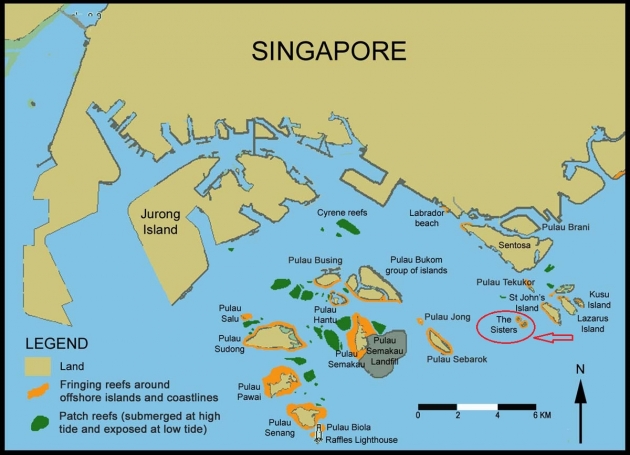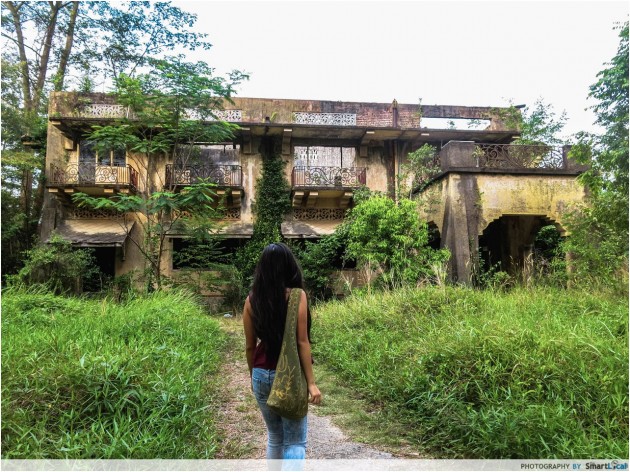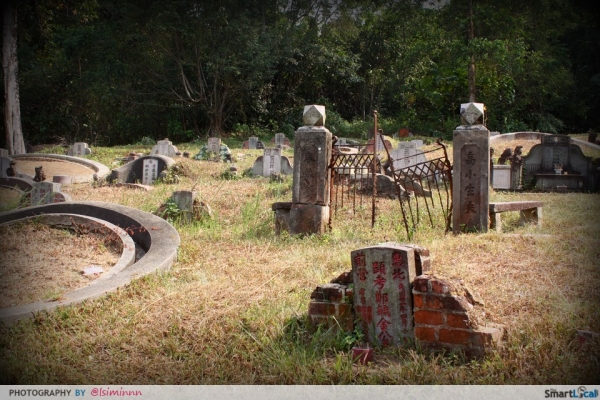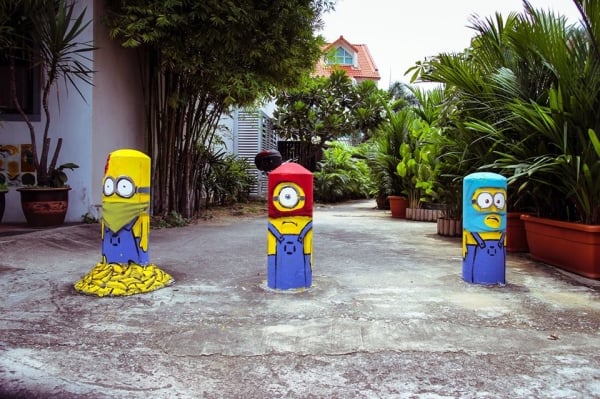The First Marine Park in Singapore
When the National Parks Board (NParks) announced in July 2014 the designation of the Sisters’ Islands as Singapore’s 1st Marine Park, I had mixed feelings. I was delighted that nature-lovers have, for once, triumphed – nature was finally allowed to flourish in close proximity to us urbanized folk.
On the other hand, I was weary of the fact that most of our children would rather be glued to their smartphones or tablets than look up and breathe in the wonders nature have to offer. Regardless, it’s heartwarming to know nature is alive and well within our boundaries. I hope the designation of Sister Islands as a marine park will create more awareness of the nature around us.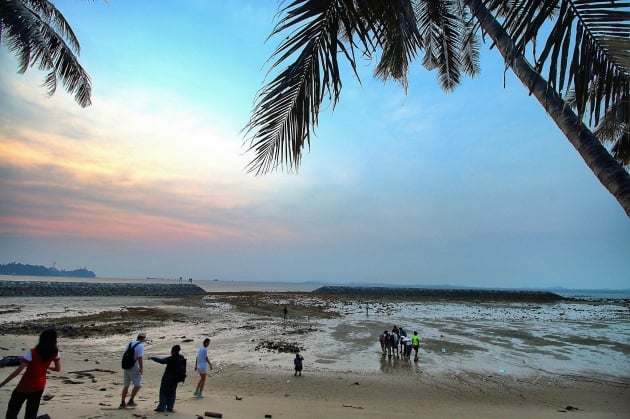 A section of the Sisters Islands Marine Park reef flats and sandy shores exposed during low tides, all ready for discovery.
A section of the Sisters Islands Marine Park reef flats and sandy shores exposed during low tides, all ready for discovery.
The media release from NParks sets the holistic and non-commercial purpose of the 40-hectare marine park as “a platform for outreach, educational, conservation and research activities related to our native marine biodiversity.” While the park is managed by NParks, its development involves several non-governmental organisations (NGO), universities, schools and other marine-centric nature groups.
Dr Lena Chan, director of National Biodiversity Centre, makes a good point: “You can’t see (marine biodiversity). And what you can’t see, you can’t love. We need to involve everybody in this very great effort in the conservation, in learning more about our marine biodiversity.”
The NParks Introduce Guided Walks
The intertidal area (the area above water at low tide and below water at high tide) at Sisters’ Islands Marine Park is ideally visited during low tides of 0.4 meters and under. This is when you will be able to observe the area teeming with marine life. At higher tides, the area will be submerged under water. No two visits will be alike – visitors on previous visits spotted dolphins in the channel between the Sisters Islands and even a hawksbill turtle at the lagoon!
During the guided walks, commentary from experienced guides will open your eyes to the park’s extensive biodiversity. These walks are conducted free of charge and are limited to a maximum 45 person per walk, although this is subject to change. The guided walks scheduled for 2014 can be seen here. 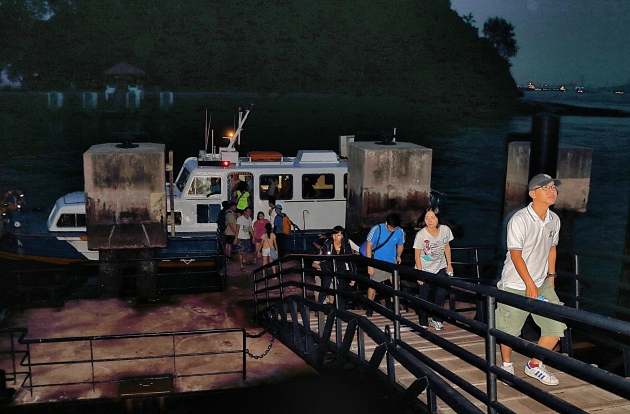 Our 6am ferry trip from Pasir Panjang Ferry Terminal took us just 20-25min to reach the islands, which was still shrouded in darkness. We had to be early as the low tides occur only at specific timings.
Our 6am ferry trip from Pasir Panjang Ferry Terminal took us just 20-25min to reach the islands, which was still shrouded in darkness. We had to be early as the low tides occur only at specific timings.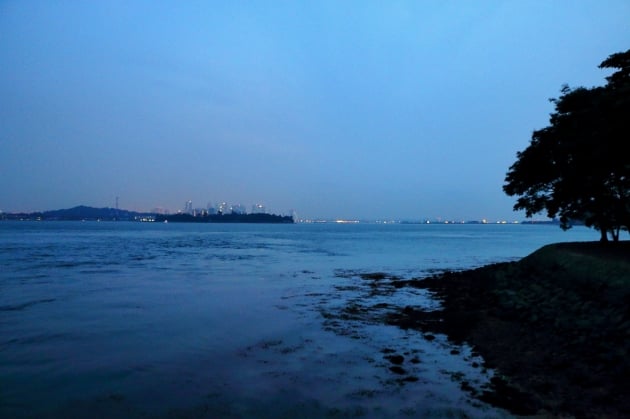 The Central Business District can be seen in the distance. Is everyone just to about to wake up or is everyone still asleep?
The Central Business District can be seen in the distance. Is everyone just to about to wake up or is everyone still asleep? 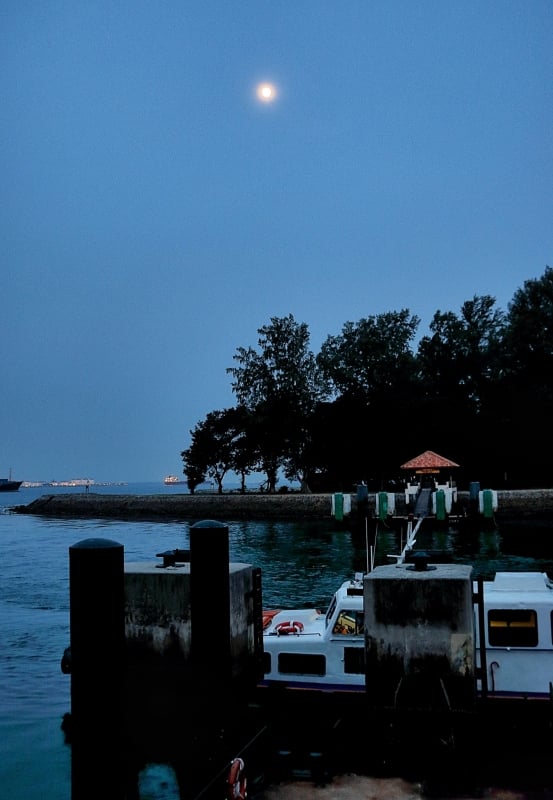 The intertidal walks are influenced by the gravitational pull of the moon. Here, the “super moon” caused the low tides for the walk.
The intertidal walks are influenced by the gravitational pull of the moon. Here, the “super moon” caused the low tides for the walk.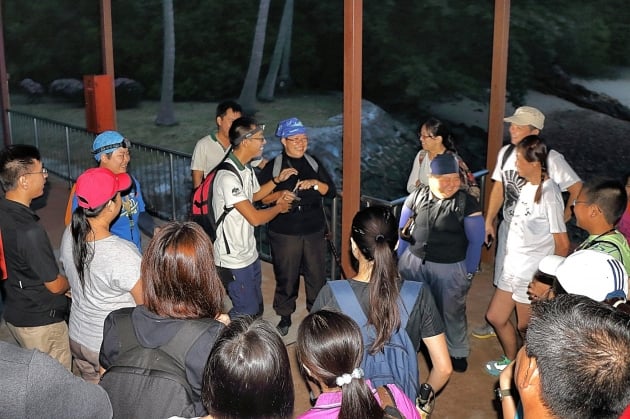 The passionate NParks staff and volunteer guides conducting introductions before the commencement of the guided walk. We were evenly distributed into groups of 10-15 for a better experience.
The passionate NParks staff and volunteer guides conducting introductions before the commencement of the guided walk. We were evenly distributed into groups of 10-15 for a better experience.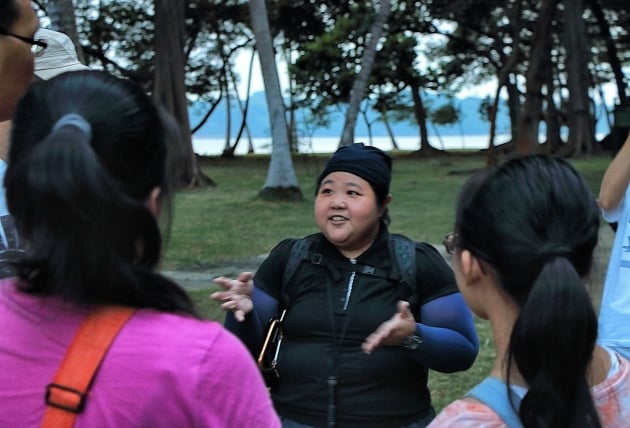 My group guide was Chay Hoon, who works at Raffles Museum of Biodiversity Research and is an avid diver. Here she briefly summarized the legend behind Sisters Islands and provided some background information about the walk.
My group guide was Chay Hoon, who works at Raffles Museum of Biodiversity Research and is an avid diver. Here she briefly summarized the legend behind Sisters Islands and provided some background information about the walk. 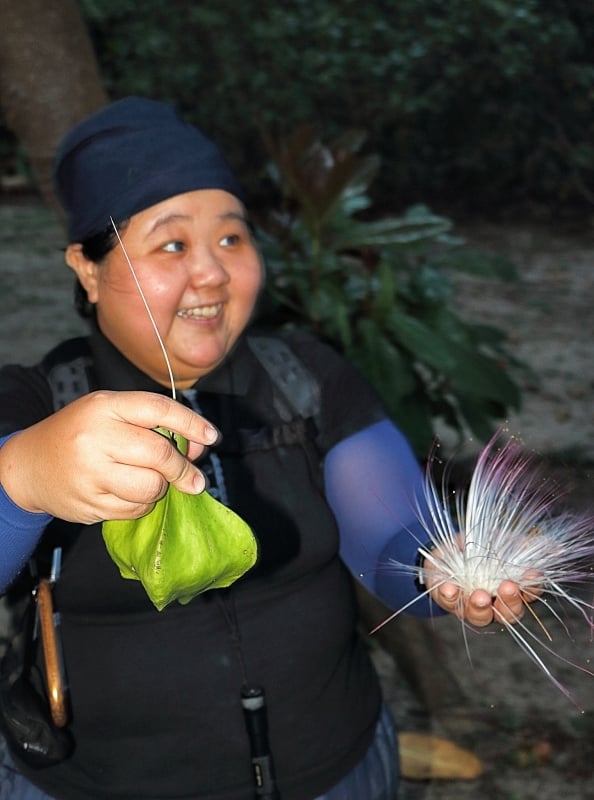 Chay Hoon showing us the islands fauna, the Sea Poison Tree fruit and flower. It looks beautiful but as the name implies, is poisonous.
Chay Hoon showing us the islands fauna, the Sea Poison Tree fruit and flower. It looks beautiful but as the name implies, is poisonous.
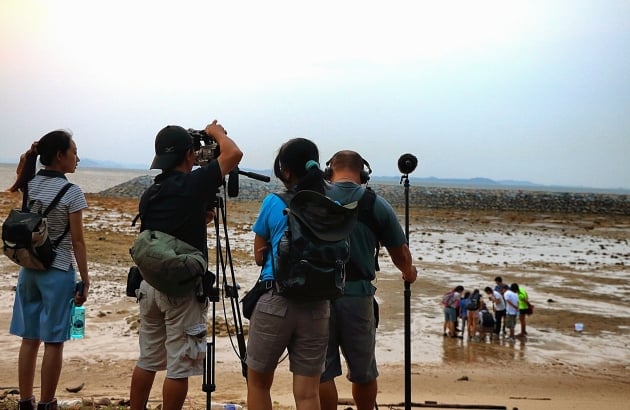 We had the Channel U film crew along during our visit, as they were filming a segment for their upcoming TV program on the marine park.
We had the Channel U film crew along during our visit, as they were filming a segment for their upcoming TV program on the marine park.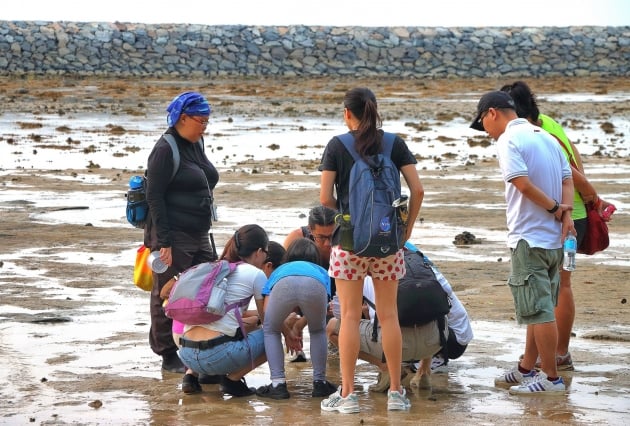 A group of visitors being enlightened about the ecosystem by Ria Tan, founder of WildSingapore, a one-stop website for Singaporeans who want to learn more about Singapore’s wildlife.
A group of visitors being enlightened about the ecosystem by Ria Tan, founder of WildSingapore, a one-stop website for Singaporeans who want to learn more about Singapore’s wildlife.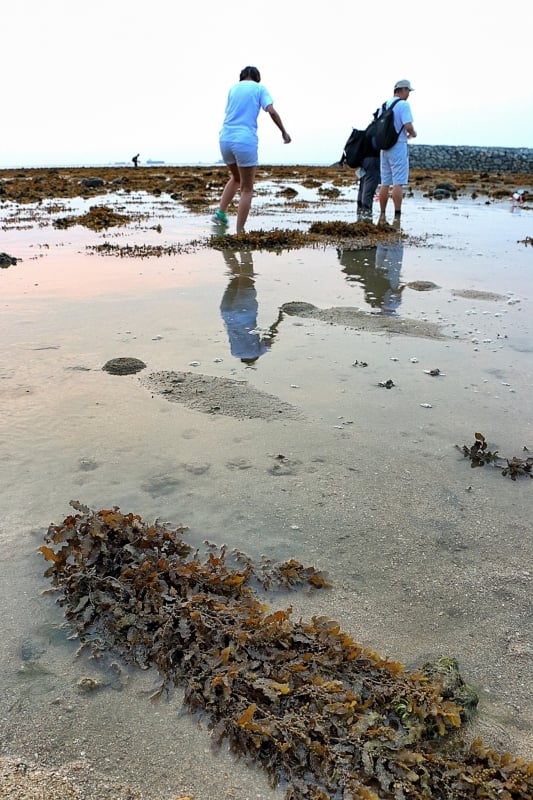 A bunch of seaweed stranded by the low tide. Seaweed plays a significant role in the ecosystem, both as a food source and as a home for some marine species. It also serves as naturally-occurring fertilizer and source of nutrients for beach and dune systems while trapping sand to minimize erosion on the beach.
A bunch of seaweed stranded by the low tide. Seaweed plays a significant role in the ecosystem, both as a food source and as a home for some marine species. It also serves as naturally-occurring fertilizer and source of nutrients for beach and dune systems while trapping sand to minimize erosion on the beach. 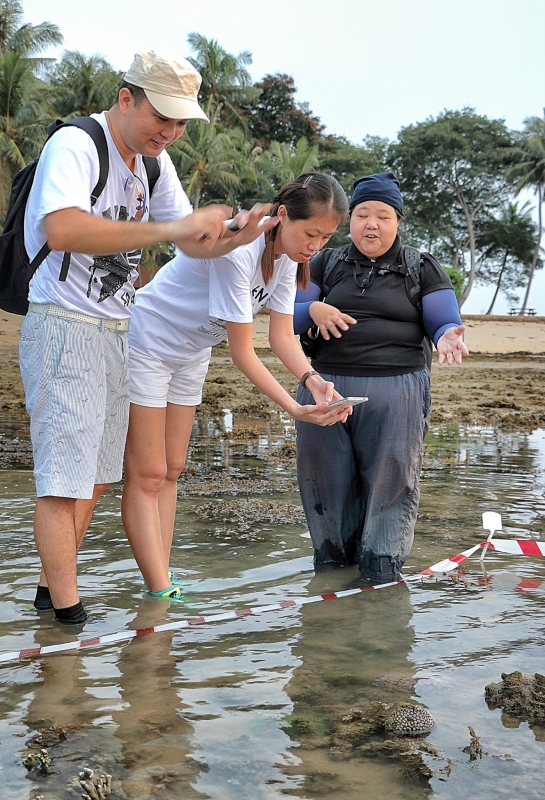 Some highlights of the marine park are marked out to prevent damage from visitors. In this instance, the giant clam Tridacna, as you can see in the picture below, is protected.
Some highlights of the marine park are marked out to prevent damage from visitors. In this instance, the giant clam Tridacna, as you can see in the picture below, is protected.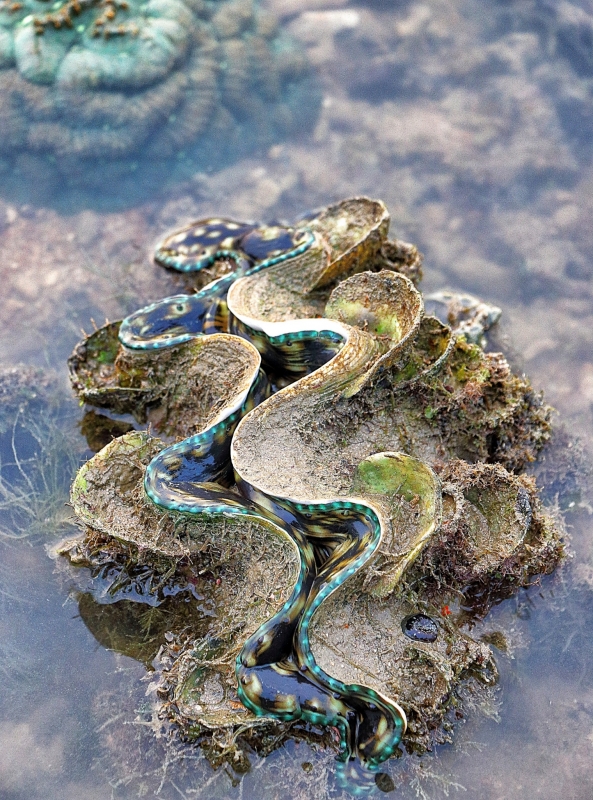 One of the park’s highlight, the Giant Clam. It can live up to a 100 years or more in the wild and grow up to 120cm across.
One of the park’s highlight, the Giant Clam. It can live up to a 100 years or more in the wild and grow up to 120cm across. 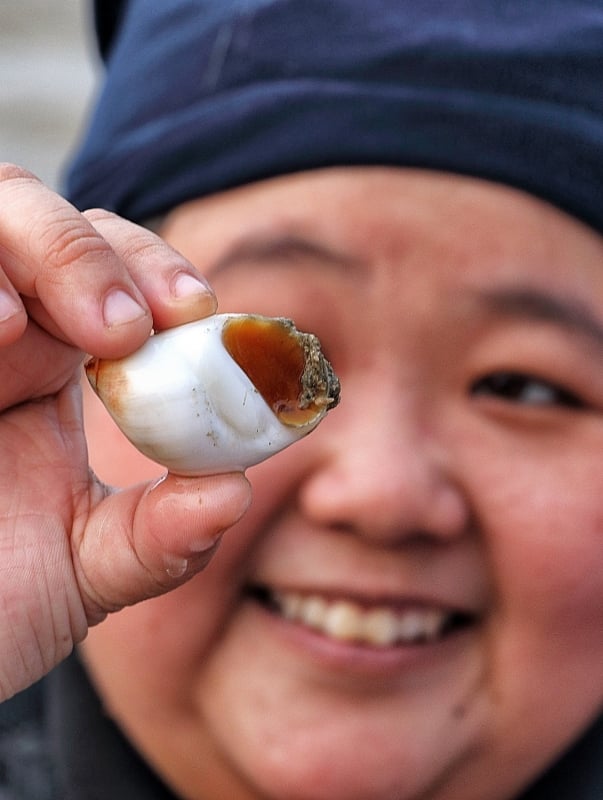 Chay Hoon showing us a Moon Snail, a predatory sea snail. You can often spot it ploughing along the sand hunting for prey. Moon Snails envelope the shell of their prey, then bore a hole through their shell with their radula (tongue) and an acidic secretion. Once the shell is bored open, it will use its proboscis to consume the flesh. If you spot an empty shell with a tiny hole on it, it’s likely to have met a Moon Snail.
Chay Hoon showing us a Moon Snail, a predatory sea snail. You can often spot it ploughing along the sand hunting for prey. Moon Snails envelope the shell of their prey, then bore a hole through their shell with their radula (tongue) and an acidic secretion. Once the shell is bored open, it will use its proboscis to consume the flesh. If you spot an empty shell with a tiny hole on it, it’s likely to have met a Moon Snail.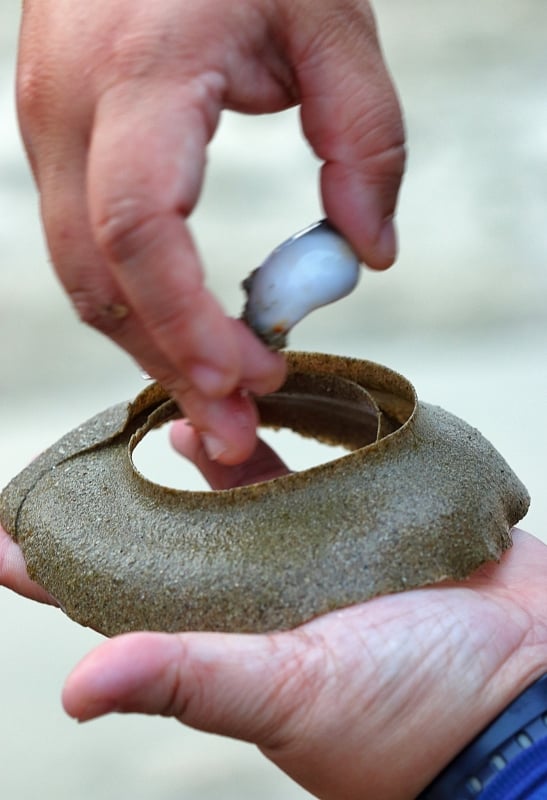 A Sand Dollar, the egg sac of the Moon Snail. “A moon snail lays her eggs at night, combining these with mucus and sand in a gelatinous sheet which hardens. She lies at the center of the collar as she creates it, so the hole in center of the collar gives an indication of the size of the mother snail. Some sand collars can be surprisingly large! They are usually the same color and texture as the surrounding sand ” – (Source – WildSingapore).
A Sand Dollar, the egg sac of the Moon Snail. “A moon snail lays her eggs at night, combining these with mucus and sand in a gelatinous sheet which hardens. She lies at the center of the collar as she creates it, so the hole in center of the collar gives an indication of the size of the mother snail. Some sand collars can be surprisingly large! They are usually the same color and texture as the surrounding sand ” – (Source – WildSingapore).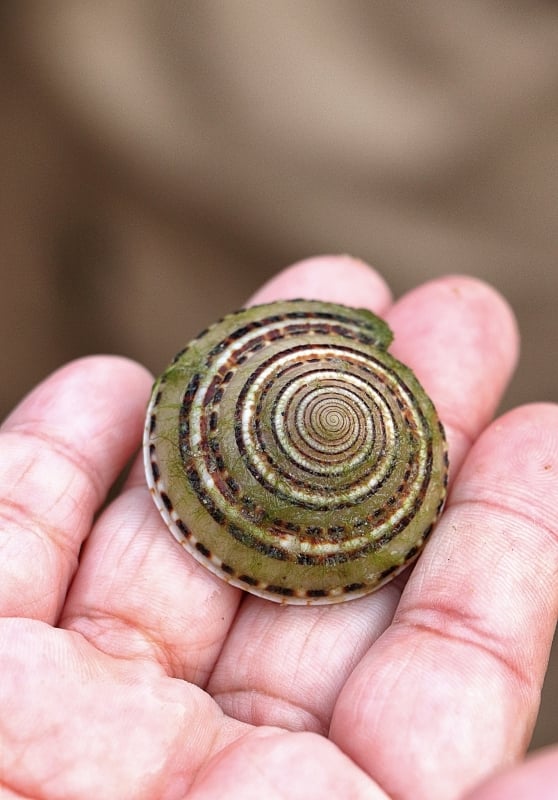 A Sun Dial Snail, about “5-7cm in diameter. An unmistakable snail, the shell coils form a flat disc-shape with a flat base. The shell has beautiful spirals in white, black and shades of brown. The body and fat tentacles are striped too, to match the shell. The operculum is made of a horn-like material.” (Source – WildSingapore)
A Sun Dial Snail, about “5-7cm in diameter. An unmistakable snail, the shell coils form a flat disc-shape with a flat base. The shell has beautiful spirals in white, black and shades of brown. The body and fat tentacles are striped too, to match the shell. The operculum is made of a horn-like material.” (Source – WildSingapore)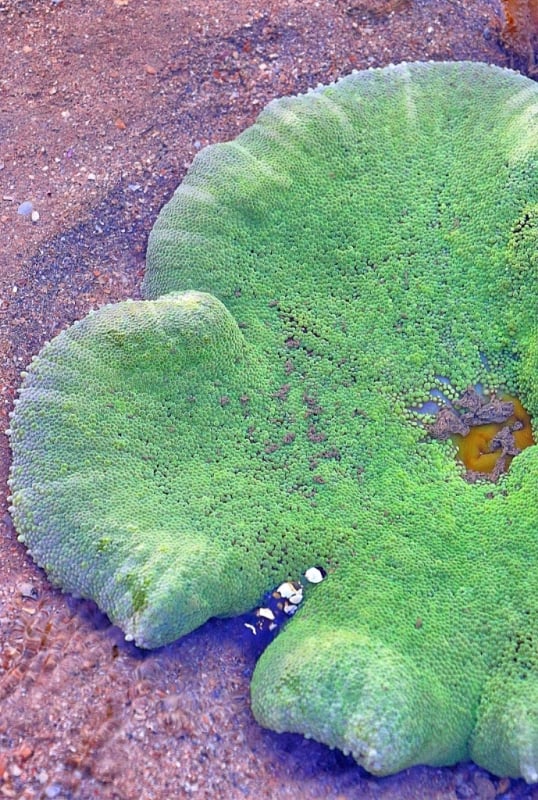 A beautiful green carpet anemone. It’s an animal, not a plant. Spot the resident shrimp at the edge! Carpet anemones come in a wide range of colors and members of the same species may also have different colors – some may even appear striped.
A beautiful green carpet anemone. It’s an animal, not a plant. Spot the resident shrimp at the edge! Carpet anemones come in a wide range of colors and members of the same species may also have different colors – some may even appear striped.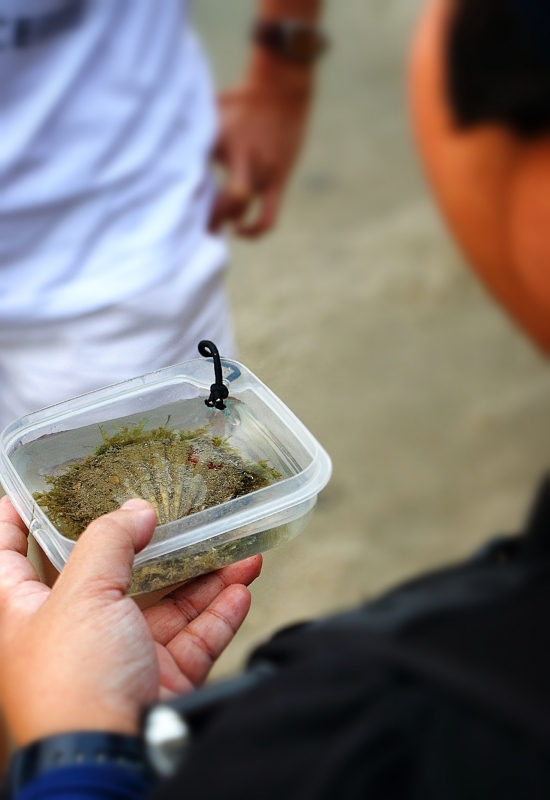 If you guessed that it’s a shell in the container, you would be right. More accurately, it is a scallop. But this scallop is too small for human consumption. “Some scallops are free living. A scallop can swim by flapping its valves and using jet propulsion. It sucks in water and then forces out a jet of water from either sides of the shell hinge.” (Source – WildSingapore)
If you guessed that it’s a shell in the container, you would be right. More accurately, it is a scallop. But this scallop is too small for human consumption. “Some scallops are free living. A scallop can swim by flapping its valves and using jet propulsion. It sucks in water and then forces out a jet of water from either sides of the shell hinge.” (Source – WildSingapore)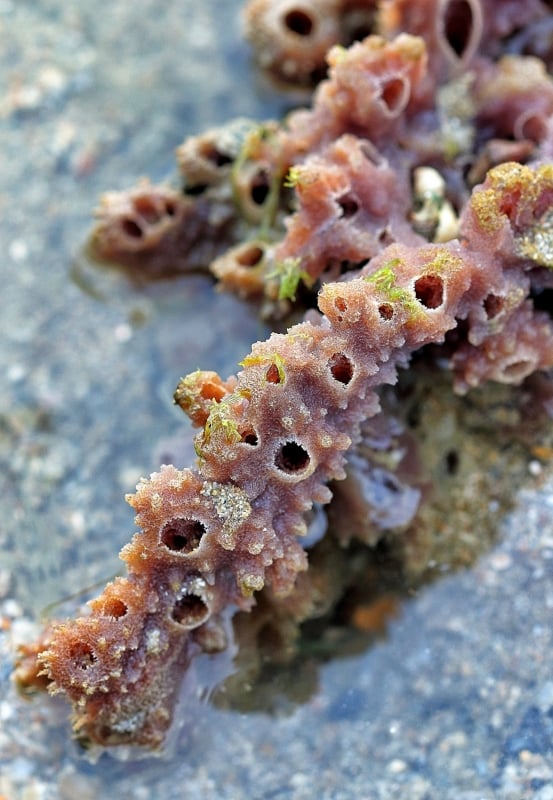 “Often mistaken for plants, sponges are actually animals, albeit very simple animals. In fact, scientists did not even consider animals until about 100 years ago! Sponges belong to Phylum Porifera which includes about 8,000 known species.” (Source – WildSingapore)
“Often mistaken for plants, sponges are actually animals, albeit very simple animals. In fact, scientists did not even consider animals until about 100 years ago! Sponges belong to Phylum Porifera which includes about 8,000 known species.” (Source – WildSingapore) 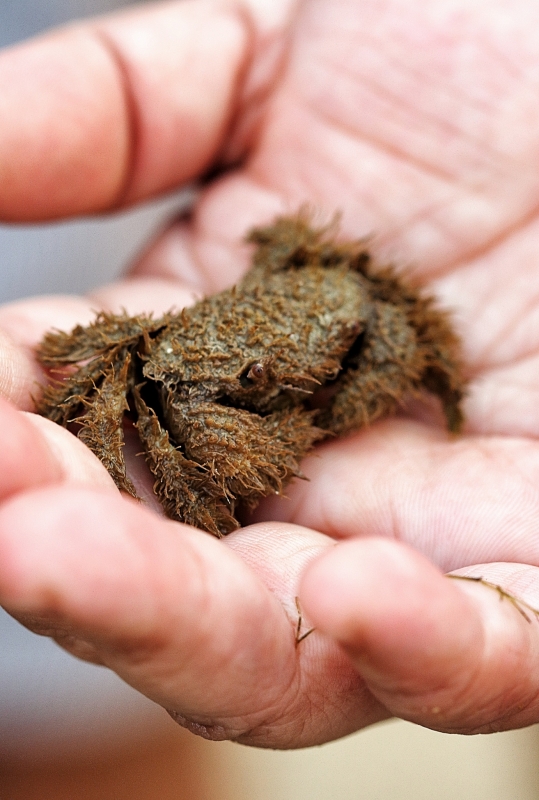 Singapore have Chilli Crabs, but Sisters Islands Marine Park has this cute Hairy Crab. You might easily miss them as they are well-camouflaged in the reef. We were fortunate to have eagle-eyed guides who brought it to us for viewing.
Singapore have Chilli Crabs, but Sisters Islands Marine Park has this cute Hairy Crab. You might easily miss them as they are well-camouflaged in the reef. We were fortunate to have eagle-eyed guides who brought it to us for viewing.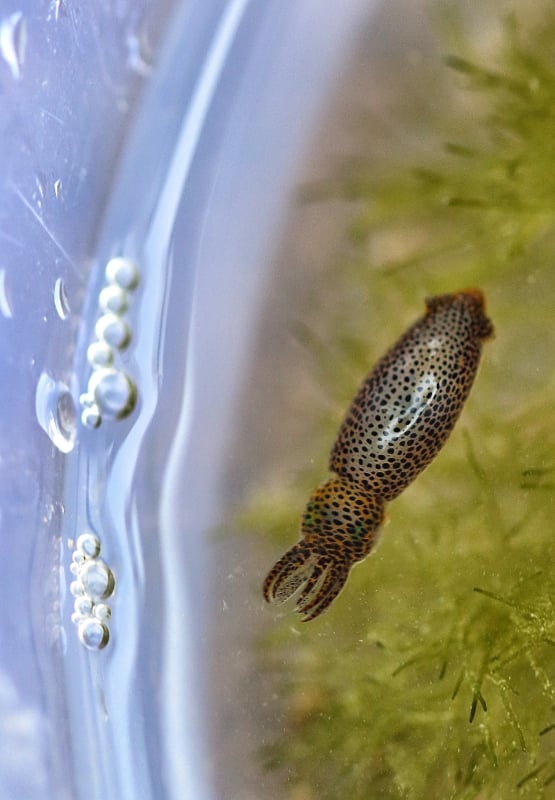 Measuring about 1cm, this squid’s body is cylindrical, with tiny circular fins at the rear end. It is often seen floating about with its longer tentacles extended beyond the shorter arms, with a slight curl at the tips of the tentacles. It has been seen catching shrimps that are as big as it. (Source – WildSingapore)
Measuring about 1cm, this squid’s body is cylindrical, with tiny circular fins at the rear end. It is often seen floating about with its longer tentacles extended beyond the shorter arms, with a slight curl at the tips of the tentacles. It has been seen catching shrimps that are as big as it. (Source – WildSingapore) 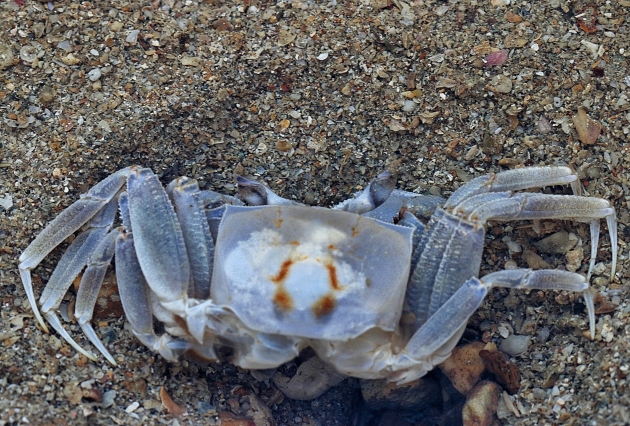 “The Smooth-eyed ghost crab is listed as ‘Vulnerable’ in the Red List of threatened animals of Singapore.” (Source – WildSingapore)
“The Smooth-eyed ghost crab is listed as ‘Vulnerable’ in the Red List of threatened animals of Singapore.” (Source – WildSingapore) 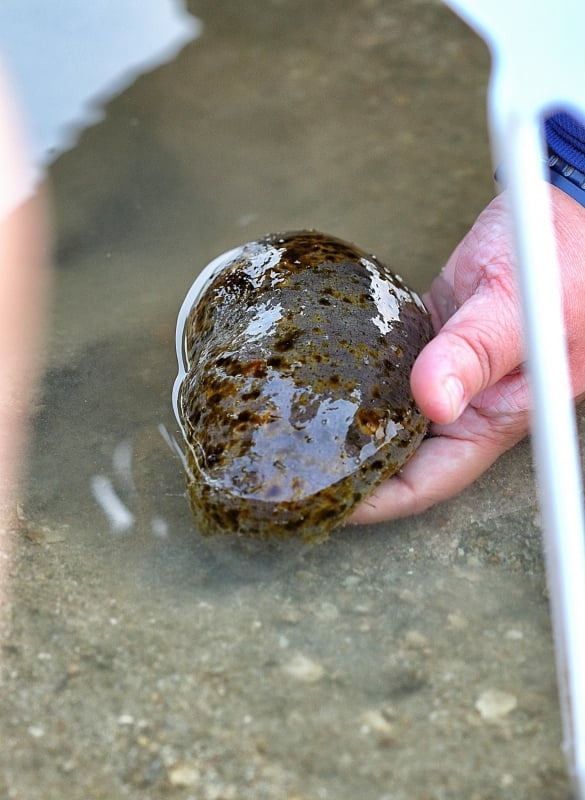 A Sea Cucumber. “It is sometimes called the ‘stone fish sea cucumber’ because it looks like a smooth stone when disturbed; bloating up into a rounded, smooth shape and retracting its tube feet. However, when relaxed, the animal can be quite long and thin.” (Source: WildSingapore)
A Sea Cucumber. “It is sometimes called the ‘stone fish sea cucumber’ because it looks like a smooth stone when disturbed; bloating up into a rounded, smooth shape and retracting its tube feet. However, when relaxed, the animal can be quite long and thin.” (Source: WildSingapore) 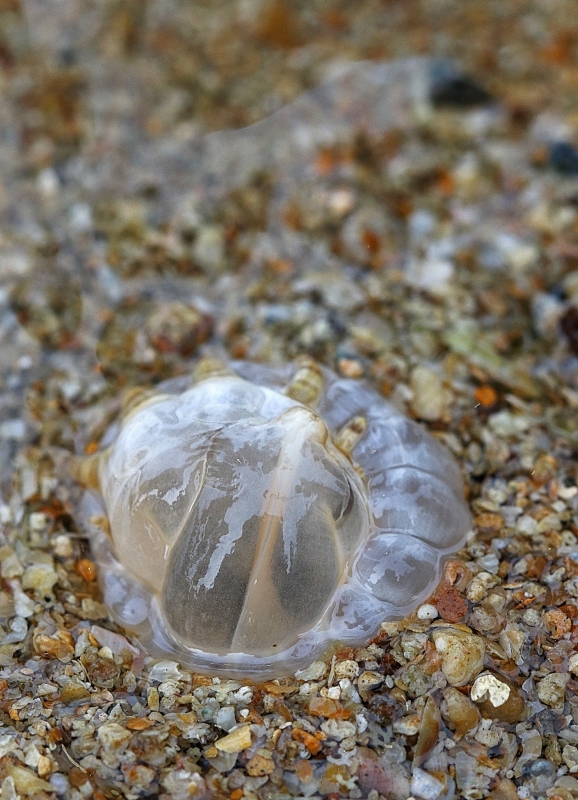 An anemone burrowing deep into the sand. “At low tide, some sea anemones can tuck their tentacles into their body to avoid drying out. So they just look like a blob. Please don’t step on them.” (Source – WildSingapore)
An anemone burrowing deep into the sand. “At low tide, some sea anemones can tuck their tentacles into their body to avoid drying out. So they just look like a blob. Please don’t step on them.” (Source – WildSingapore)
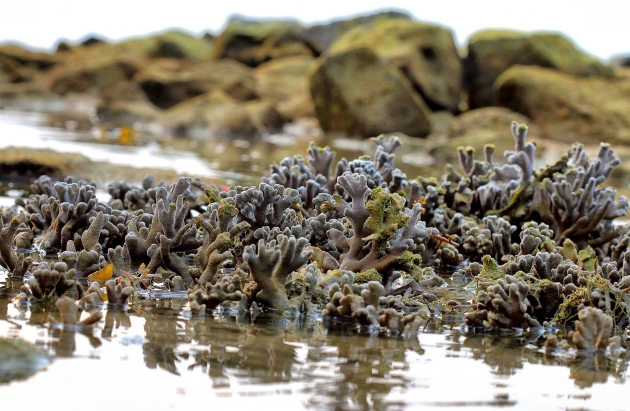 The Coral Garden. It looks like a clump of ordinary hard corals, except this group of hard corals was painstakingly relocated from other parts of Singapore’s reefs and planted here by NParks and its volunteers. It looks healthy and thriving.
The Coral Garden. It looks like a clump of ordinary hard corals, except this group of hard corals was painstakingly relocated from other parts of Singapore’s reefs and planted here by NParks and its volunteers. It looks healthy and thriving.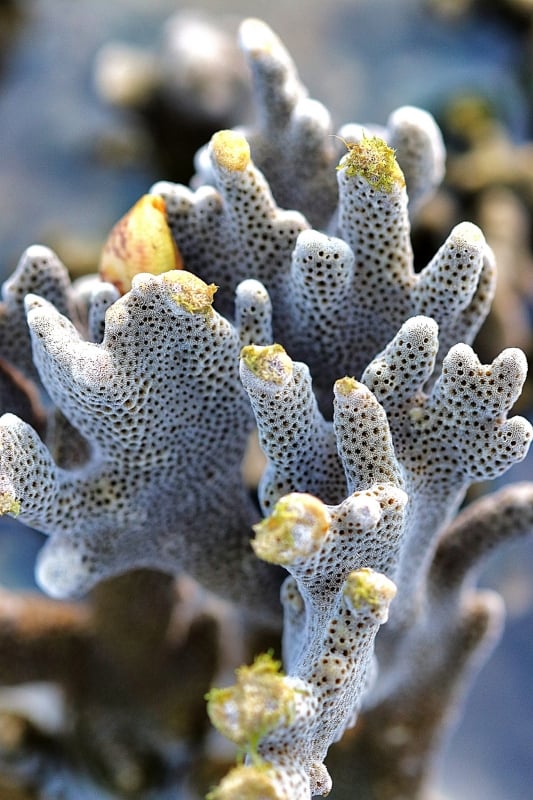 A close-up of the hard corals. “The partnership between hard corals and zooxanthellae (single cell algae) allows hard corals to thrive in clear nutrient-poor tropical waters. Like trees in the rainforest, hard corals provide the basis of life on the reef. Their hard structures provide shelter for small animals, a nursery for ocean-going creatures and protect the shoreline from strong waves, storms and erosion. (Source – WildSingapore)
A close-up of the hard corals. “The partnership between hard corals and zooxanthellae (single cell algae) allows hard corals to thrive in clear nutrient-poor tropical waters. Like trees in the rainforest, hard corals provide the basis of life on the reef. Their hard structures provide shelter for small animals, a nursery for ocean-going creatures and protect the shoreline from strong waves, storms and erosion. (Source – WildSingapore) 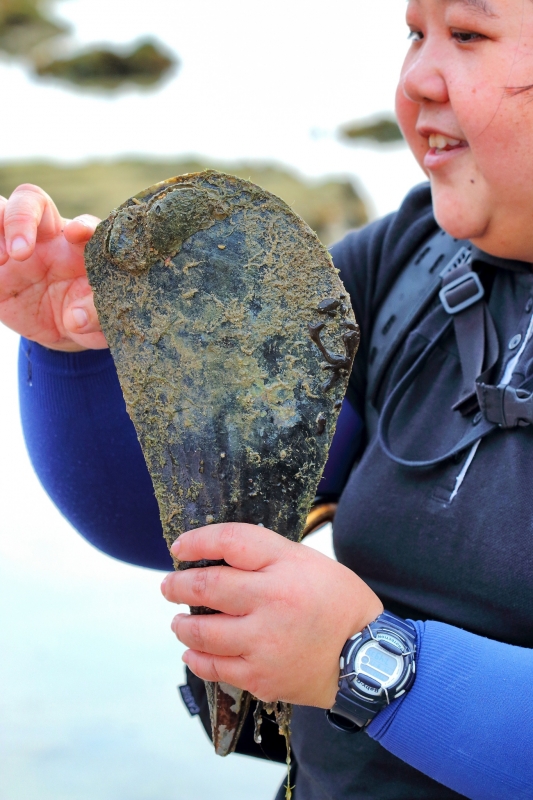 Fan Clam – “These thin, fan-shaped 10-30 cm long clams are commonly seen on some of our shores, usually near good seagrass meadows. However, they are often overlooked as most of their shells are often buried with only about 2-3cm of the shell sticking out of the ground. Their razor-sharp edges can give a nasty cut to barefoot visitors.” (Source – WildSingapore)
Fan Clam – “These thin, fan-shaped 10-30 cm long clams are commonly seen on some of our shores, usually near good seagrass meadows. However, they are often overlooked as most of their shells are often buried with only about 2-3cm of the shell sticking out of the ground. Their razor-sharp edges can give a nasty cut to barefoot visitors.” (Source – WildSingapore)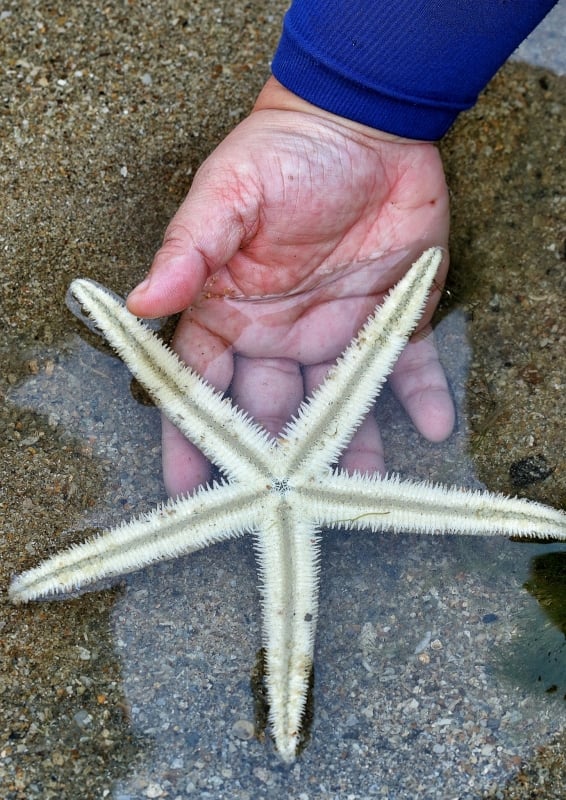 Everyone knows what a starfish is. But most don’t know that it “doesn‘t have a heart. The internal fluids do not have a one-directional flow and simply ebb and flow within the animal. It has a simple nervous system but no brain. It does, however, have a complete digestive system with a mouth and an anus.” (Source – WildSingapore)
Everyone knows what a starfish is. But most don’t know that it “doesn‘t have a heart. The internal fluids do not have a one-directional flow and simply ebb and flow within the animal. It has a simple nervous system but no brain. It does, however, have a complete digestive system with a mouth and an anus.” (Source – WildSingapore)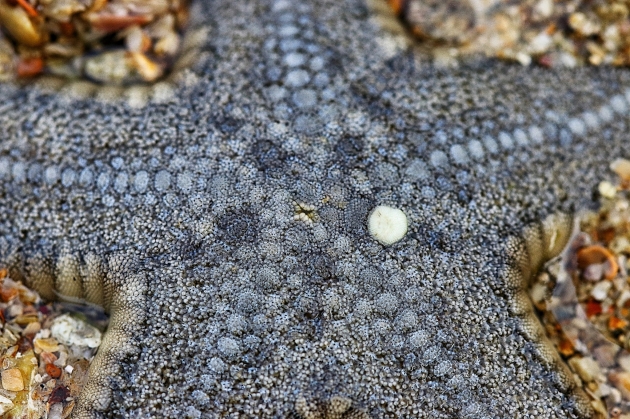 A close-up of a star fish, so you can better see the texture of its skin.
A close-up of a star fish, so you can better see the texture of its skin. 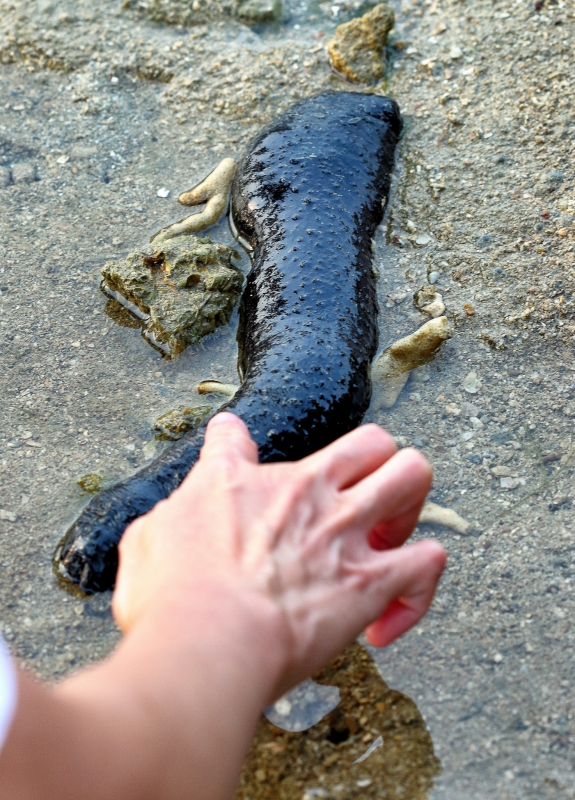 Sea cucumber facts – there are more than 1,250 species in the ocean around the world. They usually live on the sea floor, while a few species habituate near the surface of the water. Most of us would have come across sea cucumbers, as they are used a delicacy in Asian cuisine or in folk medicine.
Sea cucumber facts – there are more than 1,250 species in the ocean around the world. They usually live on the sea floor, while a few species habituate near the surface of the water. Most of us would have come across sea cucumbers, as they are used a delicacy in Asian cuisine or in folk medicine.
Bonus fact: Cucumbers breathe via their anus. Branched networks of hollow tubules absorb oxygen from the water that circulates through the anus.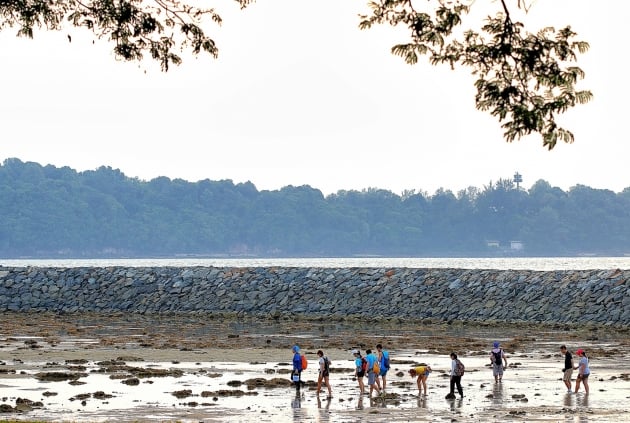 When visiting the marine park, do walk in a single path inline with the guide to cause minimal harm to the fragile “residents”.
When visiting the marine park, do walk in a single path inline with the guide to cause minimal harm to the fragile “residents”.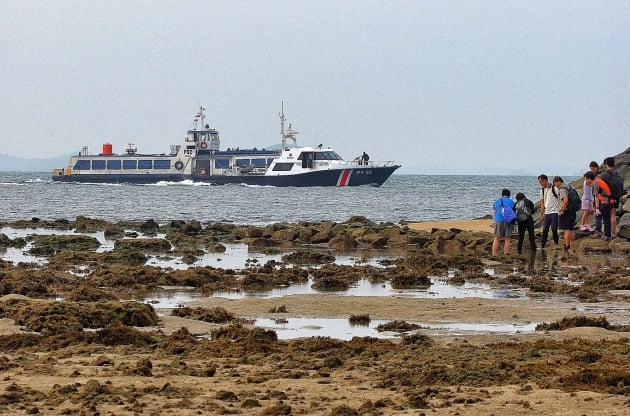 While the Singapore Coast Guard keeps our borders safe, NParks keeps our island biodiversity alive. Keep up the great work guys!
While the Singapore Coast Guard keeps our borders safe, NParks keeps our island biodiversity alive. Keep up the great work guys!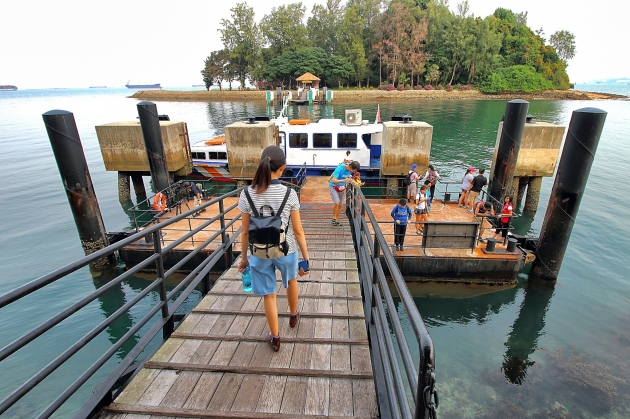 It was over too soon. We only had an hour or so before the tides come in and reclaimed their territory. At the island jetty, you can take a breather and observe the beautiful reef beneath the clear water before departing for the mainland.
It was over too soon. We only had an hour or so before the tides come in and reclaimed their territory. At the island jetty, you can take a breather and observe the beautiful reef beneath the clear water before departing for the mainland.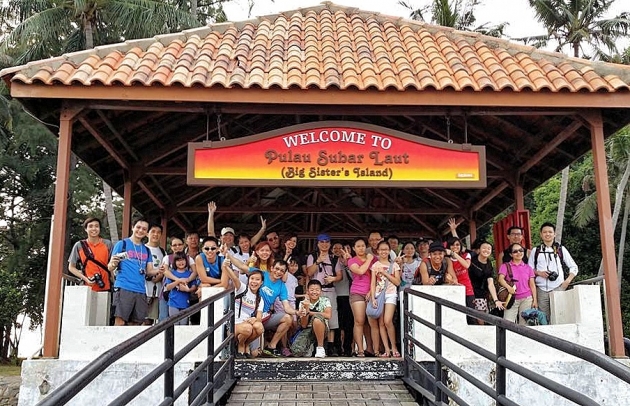 The day’s participants posing for a group picture before boarding the ferry. It was the insightful commentary by the passionate guides that enlivened the session!
The day’s participants posing for a group picture before boarding the ferry. It was the insightful commentary by the passionate guides that enlivened the session!
Dos and Don’ts when visiting the Marine Park
Dos
- Sign up for NParks guided walks.
- Take nothing but pictures.
- Wear flat, covered shoes.
- Take note of the tide levels when walking at the intertidal areas.
Don’ts
- Don’t litter in the park.
- Don’t collect or handle any marine organisms to avoid causing them stress.
- Don’t feed any animals on the island.
Map of Sisters Islands
How to get there
Visitors can charter their own boat from West Coast Pier or Marina South Pier to visit Big Sister’s Island. We advise the public to join the introductory guided walks organised by NParks, for a more fulfilling trip. The exact meeting location are subject to change and participants will be notified closer to event date. Boats will be chartered for participants of NParks’ guided walks.
At the moment, the guided walks are conducted free of charge with number of participants limited to 15 -45. Registration is based on a first-come-first-served basis. A registration link will be activated when booking opens. Do watch out for the booking dateline diligently as the guided walks are very popular.
Explore Singapore With Our Guides!
|
|
|
|
|
All pictures used in the journal are copyrighted with all rights reserved to Jensen Chua.
